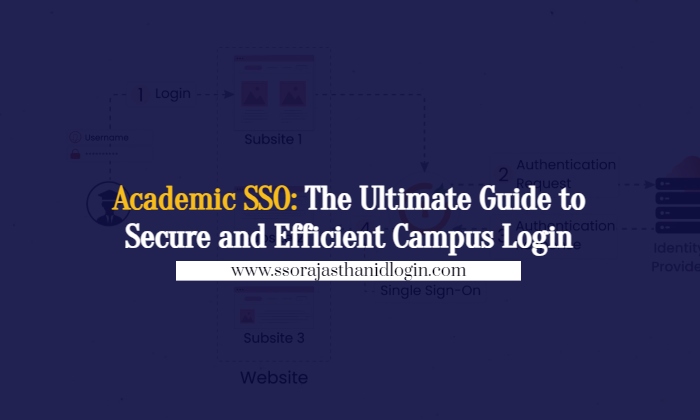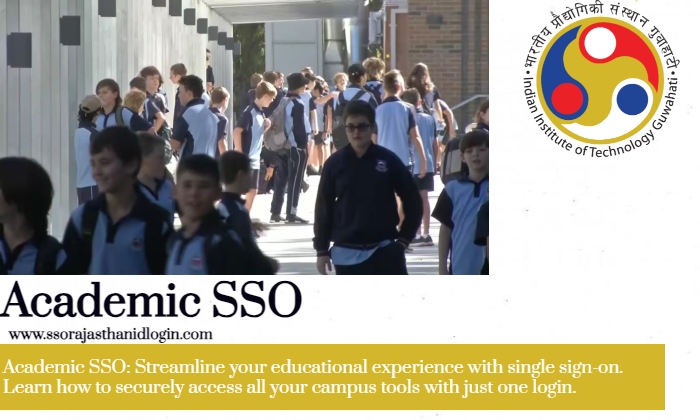Academic SSO: The Ultimate Guide to Secure and Efficient Campus Login

Table of Content
Academic SSO: The Future of Campus Access and Security
Academic Sso: Streamline Your Educational Experience With Single Sign-on. Learn How To Securely Access All Your Campus Tools With Just One Login.
Academic SSO: The Ultimate Guide to Secure and Efficient Campus Login
Academic SSO In the current digital era, educational establishments depend more and more on different online tools and platforms to streamline administrative and instructional procedures. However, administrators, teachers, and students all find it difficult to keep track of several logins for various platforms. ACADEMIC SSO (Single Sign-On) is useful in this situation. Using a single set of login credentials, users can access numerous educational sites thanks to a technique called ACADEMIC SSO. In order to guarantee a safe and smooth experience, this article will examine the idea of ACADEMIC SSO, as well as its advantages, implementation techniques, and best practices.
What is Academic SSO?
A Single Sign-On system created especially for educational institutions is known as an academic SSO. It combines a number of programs into a single, centralised login system, including learning management systems (LMS), student information systems (SIS), library resources, and other online tools. After authenticating, users don't need to log in again to access all associated platforms.
Benefits of Academic SSO
1. Convenience and Efficiency
- Single Login: This saves users time when logging in and boosts productivity because they don't have to remember multiple usernames and passwords.
- Streamlined Access: By streamlining access to many platforms, Academic SSO enables teachers and students to concentrate more on teaching and learning.
2. Enhanced Security
- Decreased Risk of Password Fatigue: The likelihood of using weak or reusing passwords is reduced when there are fewer passwords to remember.
- Centralised Authentication: By centralising the management of all authentication procedures, more oversight and command over user access is possible.
3. Improved User Experience
- Consistent Interface: Confusion and annoyance are decreased when there is a single login process for all platforms.
- Smooth Transitions: Users can move between platforms without re-authenticating, resulting in a seamless and continuous workflow.
4. Cost and Time Savings
- Reduced IT Support: Fewer login issues mean less demand for IT support, saving time and resources.
- Simplified User Management: Administrators can manage user access and permissions more efficiently from a single interface.
 ACADEMIC SSO Benefits
ACADEMIC SSO BenefitsHow Does Academic SSO Work?
Centralised authentication is the foundation upon which ACADEMIC SSO functions. A user is sent to an SSO login screen when they want to access an educational platform. Following their login, the SSO system checks the data against a central database. The user is granted access to all connected platforms without requiring them to check in again, provided that their credentials are valid.
Key components of an Academic SSO system include:
- Identity Provider (IdP): The service that handles user authentication and gives linked apps access to identity data.
- Service Provider (SP): Apps and platforms for education that use the IDP to authenticate users.
- Authentication Protocols: The IdP and SPs securely communicate authentication data via popular protocols like OAuth and SAML (Security Assertion Markup Language).
Implementation Strategies for Academic SSO
1. Choosing the Right SSO Solution
- Scalability: Make sure the system is able to meet the needs of the organisation both now and in the future.
- Compatibility: Every platform, both current and future, should be able to use the SSO system.
- Security Features: To improve security, look for features like multi-factor authentication (MFA).
2. Integration with Existing Systems
- Collaboration with IT Teams: Work closely with IT departments to ensure smooth integration with current systems.
- Testing and Validation: Before full deployment, conduct thorough testing to identify and resolve any issues.
3. User Training and Support
- Training Sessions: Provide training for students, faculty, and staff on how to use the new SSO system.
- Support Resources: Offer guides, FAQs, and a helpdesk to assist users during the transition.
4. Monitoring and Maintenance
- Regular Audits: Conduct periodic audits to ensure the system is functioning correctly and securely.
- User Feedback: Collect feedback from users to identify areas for improvement.
 ACADEMIC SSO Work Details
ACADEMIC SSO Work DetailsChallenges in Implementing Academic SSO
1. Technical Complexity
- Integration Problems: It might be technically difficult to combine several systems under a single SSO; this requires knowledge and careful planning.
- Custom Solutions: Custom SSO solutions may be necessary for some educational platforms, which might raise costs and complexity.
2. Security Concerns
- Single Point of Failure: All linked platforms may be at risk of exposure if the SSO system is breached.
- Data privacy: To avoid unwanted access, handling sensitive user data necessitates strict security measures.
3. User Resistance
- Change Management: Some users may resist the change, especially if they are accustomed to the old login systems.
- Training Requirements: Adequate training and support are essential to ensure a smooth transition and user acceptance.
Best Practices for Secure Academic SSO
- Implement Multi-Factor Authentication (MFA)
- Adding an extra layer of security, such as MFA, helps protect against unauthorized access even if login credentials are compromised.
- Regularly Update and Patch the SSO System
- Ensure that the SSO software is always up-to-date with the latest security patches and updates.
- Conduct Security Audits
- Regular security audits can help identify potential vulnerabilities and ensure the system remains secure.
 ACADEMIC SSO Update
ACADEMIC SSO UpdateConclusion
ACADEMIC SSO is a powerful tool that can significantly enhance the efficiency, security, and user experience of educational institutions. By simplifying the login process, it allows students, educators, and administrators to focus on what truly matters: education. As technology continues to evolve, the future of ACADEMIC SSO looks promising, with ongoing improvements in security, integration, and user experience. Implementing a robust ACADEMIC SSO system is not just a technological upgrade; it's an investment in the future of education.
FAQ (Frequently Asked Questions)
Academic Single Sign-On, or Academic SSO, is a system that enables users to log into several learning platforms and resources with just one set of login credentials. Students, teachers, and staff may more easily and securely control their internet access thanks to the centralisation of authentication.
By eliminating the need for multiple passwords, Academic SSO improves security by lowering the likelihood of password fatigue and weak passwords. It can be used with multi-factor authentication (MFA) for increased security, and it centralises authentication for improved monitoring and control.
The following are Academic SSO's primary advantages:
- Convenience: Users simply have to keep one set of login information in mind.
- Efficiency: Quicker access to many channels.
- Security: The chance of a compromise is decreased with centralised authentication.
- Savings: Fewer login problems mean fewer calls for IT assistance.
- Better User Experience: Easily switch between platforms without having to re-authenticate.
An Identity Provider (IdP), a centralised authentication mechanism, is how Academic SSO operates. Upon logging in, the user's credentials are validated by the IdP, which then authorises access to all linked platforms, or Service Providers (SPs), without requiring the user to log in again.
The majority of educational platforms, such as learning management systems (LMS), student information systems (SIS), library resources, and more, can be integrated with academic SSO. Compatibility, however, is contingent upon the particular SSO solution and the platforms in use.
Technical difficulty, problems integrating Academic SSO with current systems, possible security risks, and user reluctance are some of the implementation hurdles. Overcoming these obstacles requires careful planning, extensive testing, and sufficient user training.
When used correctly, Academic SSO is safe to utilise. It can incorporate cutting-edge security features like multi-factor authentication (MFA) and centralised authentication. To guarantee continued security, it must be updated and maintained on a regular basis, just like any other system.